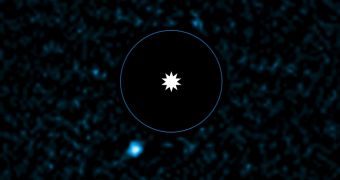Thanks to the Kepler space telescope, whose future is in peril, we've discovered hundreds of exoplanets, and thousands more may be revealed by further analysis of the data.
However, all of these discoveries are indirect, and we know a planet is there because we can see its effects.
But very few planets outside of the solar system have actually been seen. Now, the European Southern Observatory (ESO) boasts about its latest discovery, probably the smallest exoplanet directly imaged so far.
"In the new observations, the likely planet appears as a faint but clear dot close to the star HD 95086. A later observation also showed that it was slowly moving along with the star across the sky," ESO explained.
"This suggests that the object, which has been designated HD 95086 b, is in orbit around the star. Its brightness also indicates that it has a predicted mass of only four to five times that of Jupiter," it added.
The new exoplanet is quite far away from its star, at 56 AU, or 56 times the distance between the Earth and the sun. The star itself is similar but a bit bigger than our sun and only 10 to 17 million years old.
There's a debris disk surrounding the star, making it a good candidate for finding rocky planets as well, though the current technology makes it unlikely – if not downright impossible – to spot them.

 14 DAY TRIAL //
14 DAY TRIAL //